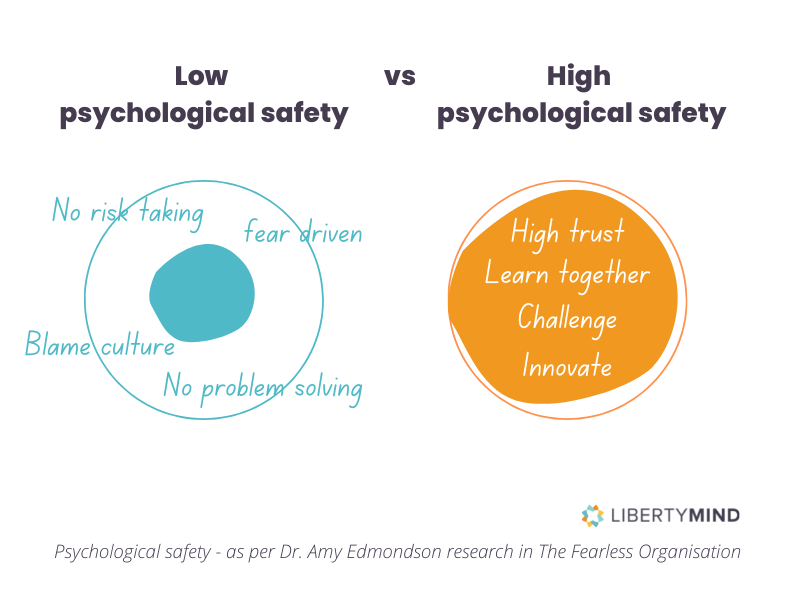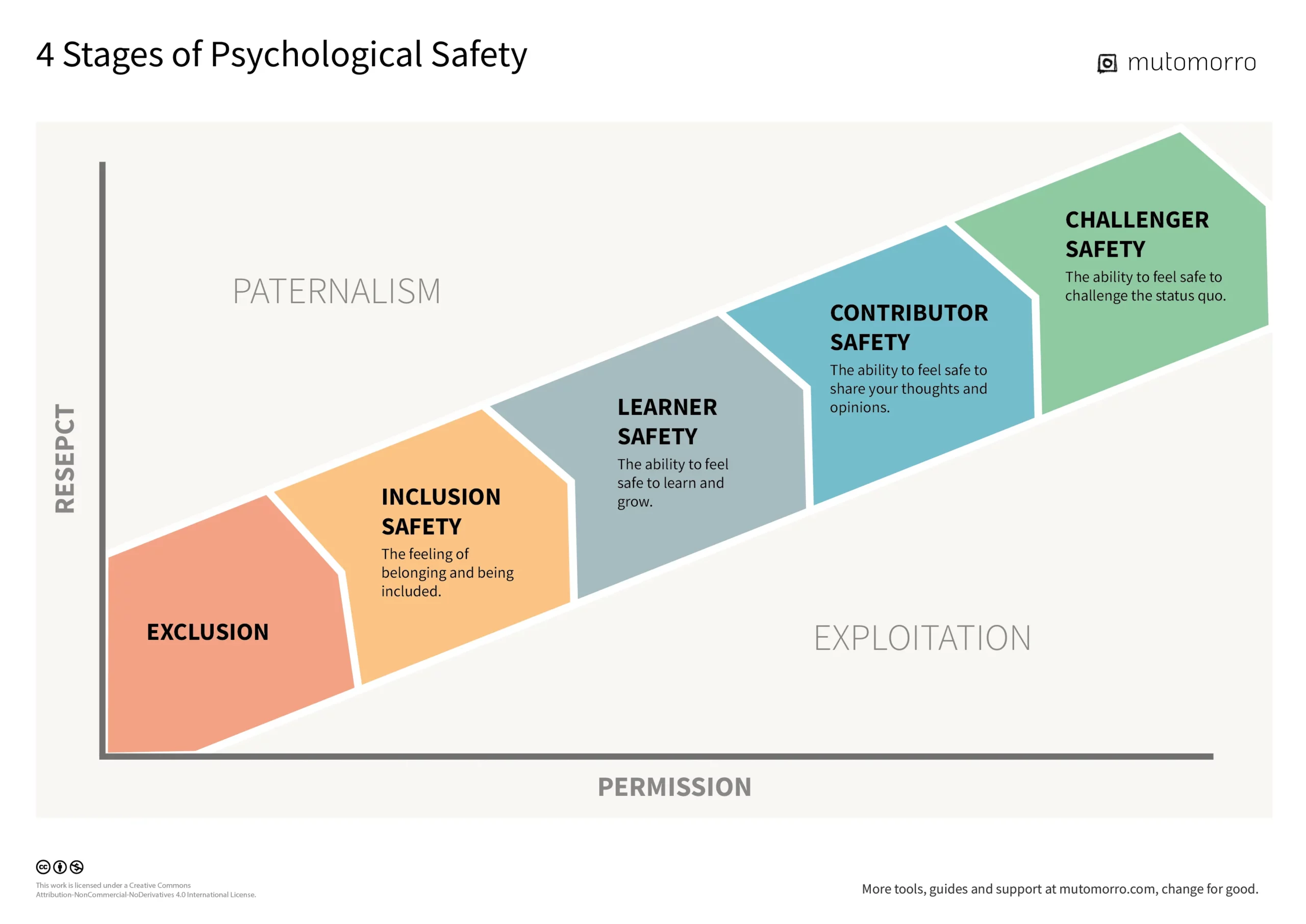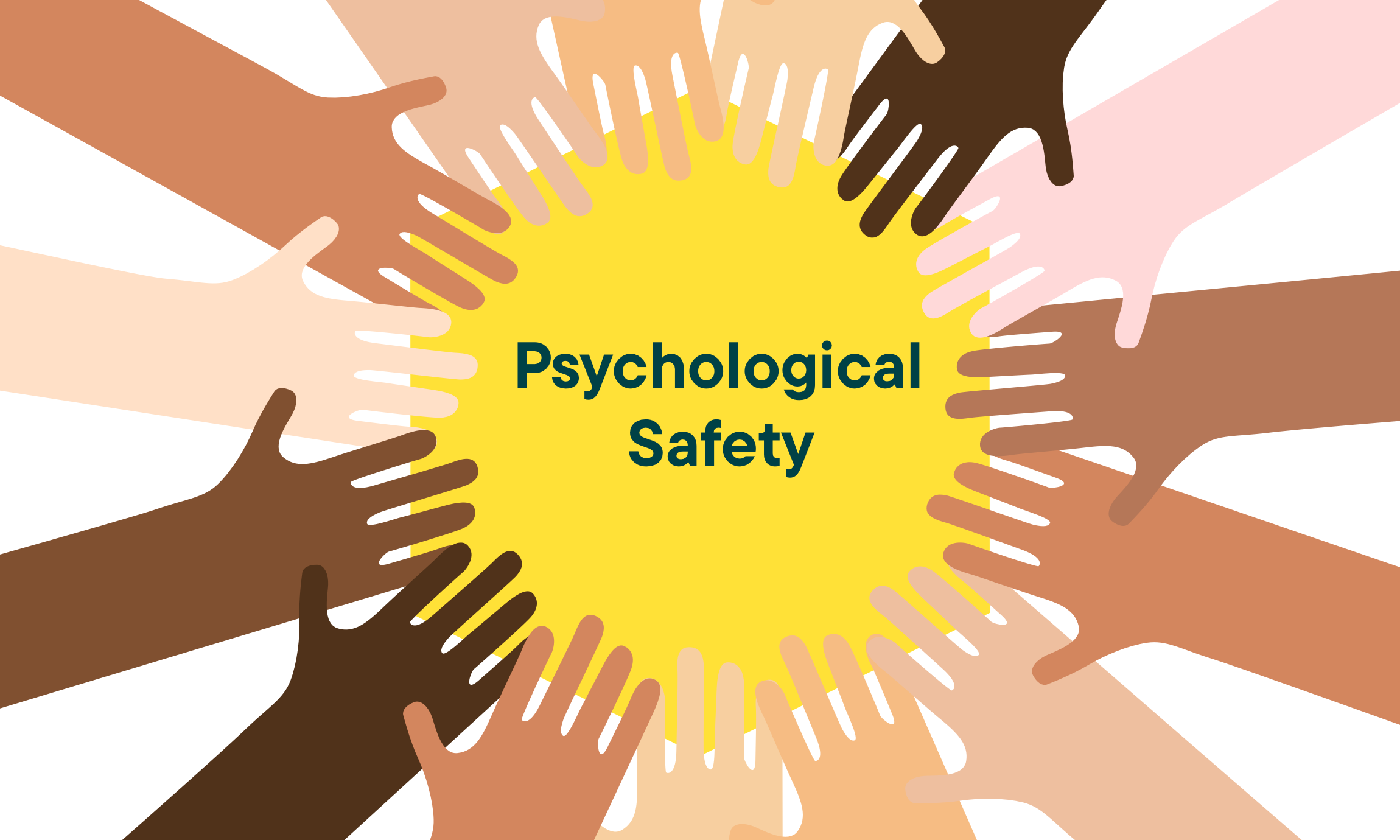In today’s fast-paced business world, a persistent enigma lies at the core of every organization, large or small:
How do we maximize innovation, productivity, and people’s commitment in an ever-changing environment?
Surprisingly, the answer is not found in the latest technologies or revolutionary management strategies, but in a deeply human concept: psychological safety.
Think for a moment on the work environment in your organization: Do people truly feel free to express their ideas?And to share their concerns? And to admit their mistakes?
In many business environments, the answer is a resounding no.
In my experience working with organizations from 1999, first from inside and after from outside, I had many chances to distribute a questionnaire that I have designed to check the levels of Psychological Safety: almost the 100% of the cases, the average levels of psychological safety was around 1.5 and 2 on a scale of 0 to 5.
Last time I used this questionnaire was last week in a forum that joined 20 different companies.
It seems clear that there is a fear of judgment, shame, or even retaliation for failing that inhibits innovation and hampers personal and organizational growth. This culture of fear not only demotivates people but also creates fertile ground for stress, anxiety, and a high turnover rate.

Image Credit: LibertyMind
The Benefits of Psychological Safety
Conversely, companies that prioritize psychological safety enjoy a series of tangible and intangible benefits that are too valuable to ignore. Some of the are:
- Accelerated Innovation: Teams feel empowered to think outside the box and propose bold ideas.
- Greater Commitment: People are in a more conducive context to feel commitment.
- Organizational Resilience: The ability to quickly adapt to changes and overcome challenges is significantly enhanced.
- Culture of Continuous Learning: Mistakes become valuable lessons instead of sources of punishment or shame.
- Attraction of Talent: People want to be part of and remain in an environment where they feel valued and safe to grow professionally.
Clark’s Formula for Transformation
I recommend getting to know the four stages or essential levels for cultivating psychological safety that Timothy R. Clark offers, which I will share with you below.
It is one of the tools that, combined with others, I have used when accompanying companies in change processes. During theses processes it can be necessary to work on psychological safety. Good levels of psychological safety are fundamental for almost everything.
As I said, this author presents this as a successive stages or levels (without the previous one, the next cannot be reached), however, it has been more useful and effective for me to work them as elements that enhance each other, regardless of the order.
In my professional experience, people are very diverse and therefore so are our needs, so the level of relevance of the following four “items” varies from one person to another, although, no doubt, all four are important.
And therefore, this is how I am going to present them to you:
1. Inclusion Safety: Acceptance and belonging are fundamental for any human being. All of us need to feel accepted, regardless of our origin, belief, position, etc.
Practical suggestion: it is important, therefore, that you pay attention to this and that you develop in your company the capacity for acceptance and respect, both in teams and in those people who have relevant roles and who especially impact the rest of the people in your organization.
2. Learning Safety: In general, it is very stimulating for people to learn new things. It is very likely that the people in your company who do not have this need are in a stage of demotivation, and therefore it would be good for you to investigate the causes. In fact, it is likely that they do have that need and are covering it outside your company through hobbies, for example. Which is not incompatible, on the contrary! Learning in any area can generate surprising benefits in almost any area. The problem is if in your company they do not feel safe doing it, and only feel safe channeling that energy outside.
Practical suggestion: One way to promote this type of safety is to encourage curiosity and inquiry, allowing people in your company to ask, explore, and share knowledge without fear. This is something that, for example, can be easily incorporated into meetings or work sessions and also something you can train people in leadership roles in your company.
3. Contribution Safety: It is important for people to find meaning in what we do. That is, that what we do serves a purpose, that we contribute in some way. And, additionally, that the contributions we make are perceived as valuable, by ourselves and by the rest of the people in the organization.
Practical suggestion: giving autonomy to the people in your organization to do their work is fundamental, and it may be useful for you to establish practices or mechanisms for recognition or gratitude.
4. Challenge Safety: It’s about people not feeling that they are putting themselves at risk by proposing deep changes in your organization. Therefore, actively promoting constructive dissent, allowing people to challenge the status quo and propose innovations, is the way to achieve it.
Practical suggestion: do not be scared when people in your organization question how things are done. Help channel that energy because if you find a way to do it, it can be the germ of innovations that improve your business.
Final practical suggestion: these four elements could perfectly be the guiding thread for the design or redesign of your onboarding processes and support in professional development.

Image Credit: Mutomorro.com
These four elements do not have to be the only the ones to consider, but they are a fantastic starting point.
Strategies to Foster Psychological Safety
In short, creating a work environment where psychological safety flourishes requires dedication and strategy. Although I have already been incorporating practical suggestions, I present you here additional possible lines of action, some of them very specific, that have worked very well for me when I have helped companies:
- Promote vulnerability: Train people in relevant and leadership roles to be the first to show vulnerability, admitting mistakes and showing their humanity.
- Foster diversity and inclusion: Recognizing and valuing individual differences enriches the fabric of the organization and promotes a sense of belonging.
- Transform failure into a learning opportunity: Reconfigure the perception of failure as a necessary step towards success. Incorporating this into the feedback processes you have designed is a simple way to do it.
- Appreciate contribution: Timely and meaningful appreciation fuels motivation and reinforces a positive culture. I particularly recommend that such appreciation not only be top-down, no matter if your organization is hierarchical or not, but that you facilitate, and even establish ways to do it in all directions. If you use Microsoft, Teams’ praises is something very accessible to start experimenting with this.
- Active and Empathetic Listening: Train the people in your organization to listen to understand, not just to respond, and promote an environment of mutual respect.
Implementing a cultural change towards psychological safety is not without challenges. Resistance to change, entrenched hierarchical structures, and poor communication or communication difficulties, among other things, can hinder progress.
However, with patience and clear strategies, these obstacles can be overcome, thus enhancing the full potential of your teams. Investing in creating an environment where people feel safe to express their ideas, learn from their mistakes, and fully contribute, you are placing your organization on the path to innovation, resilience, and long-term success.

Image Credit: Jostle Blog
Accelerate your journey with some additional resources
Below I leave you additional resources to encourage you to take action:
First, I recommend this pair of readings: “The Fearless Organization” by Amy Edmondson and “The 4 Stages of Psychological Safety” by Timothy R. Clark.
And if you are more of an audiovisual person, here you have:
“Building a psychologically safe workplace” by Amy Edmondson. In this talk, Amy Edmondson, a professor at Harvard Business School and a key figure in the study of psychological safety, shares crucial insights on how creating a psychologically safe work environment can foster more effective, innovative, and committed teams. Edmondson breaks down the concept of psychological safety and offers practical strategies to cultivate a culture where people feel valued, heard, and empowered to take risks without fear of judgment or retaliation.
“Why good leaders make you feel safe” by Simon Sinek. In this talk, Sinek explores how great leaders create a circle of safety at work, resulting in more united and loyal teams.
“Psychological Safety: How to Build Trust and Create Open, Successful Teams” by Chris Strouthopoulos. Strouthopoulos discusses the ways in which fear of judgment holds us back, how this impacts team performance, and specific strategies to build trust and create open, collaborative, and high-performing teams.
“How Psychological Safety Drives Innovation” by Daniela Landherr at TEDxSHMS. Landherr shares learnings from her 15 years at Google, highlighting why psychological safety is crucial for fostering innovation.
Psychological safety at Shiftbalance
We are committed to inclusive workplaces and our diversity and inclusion trainings always include elements of psychological safety. Within all our services, mental health and safety is a priority. Check our services page to learn more!
Author: Miriam Moreno Bellido









